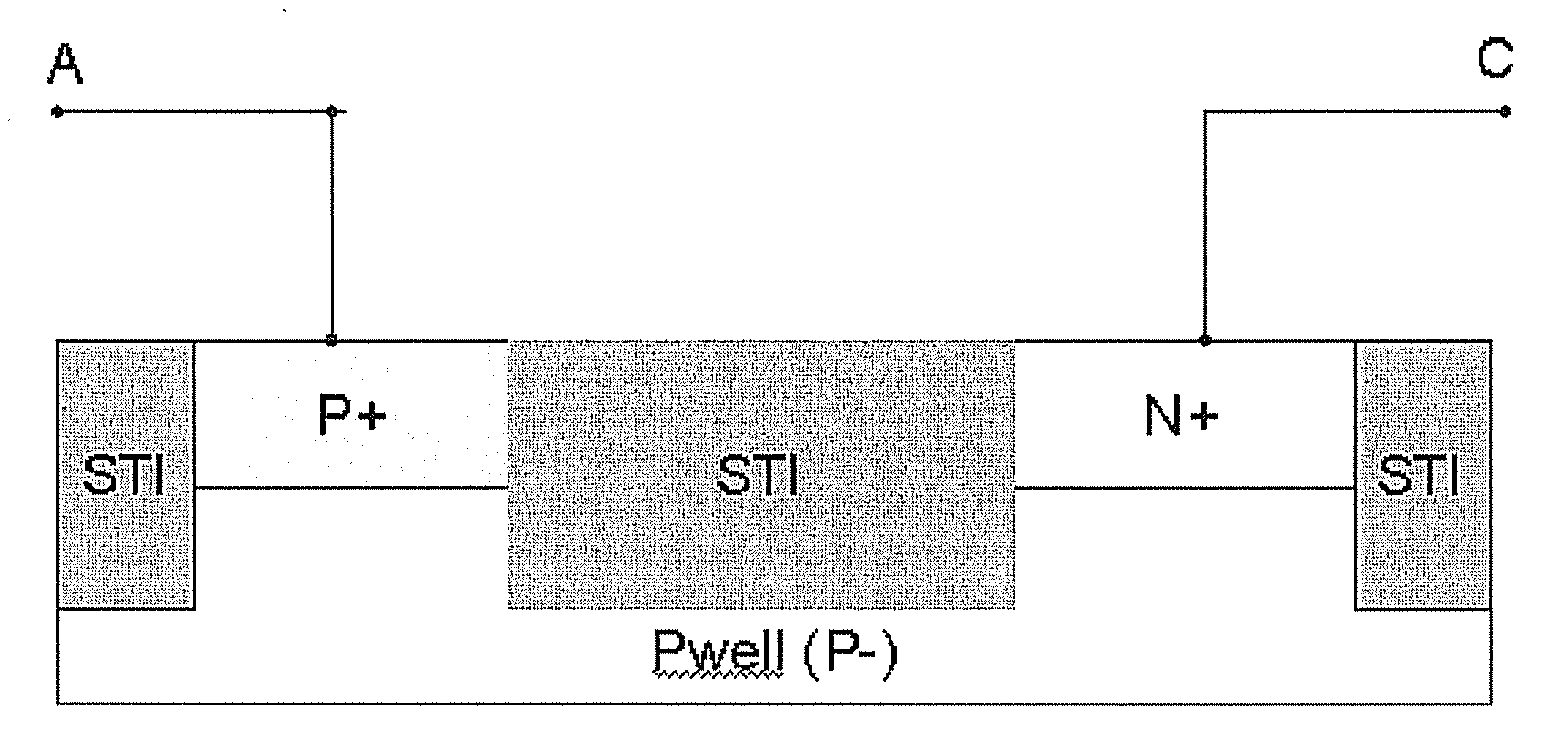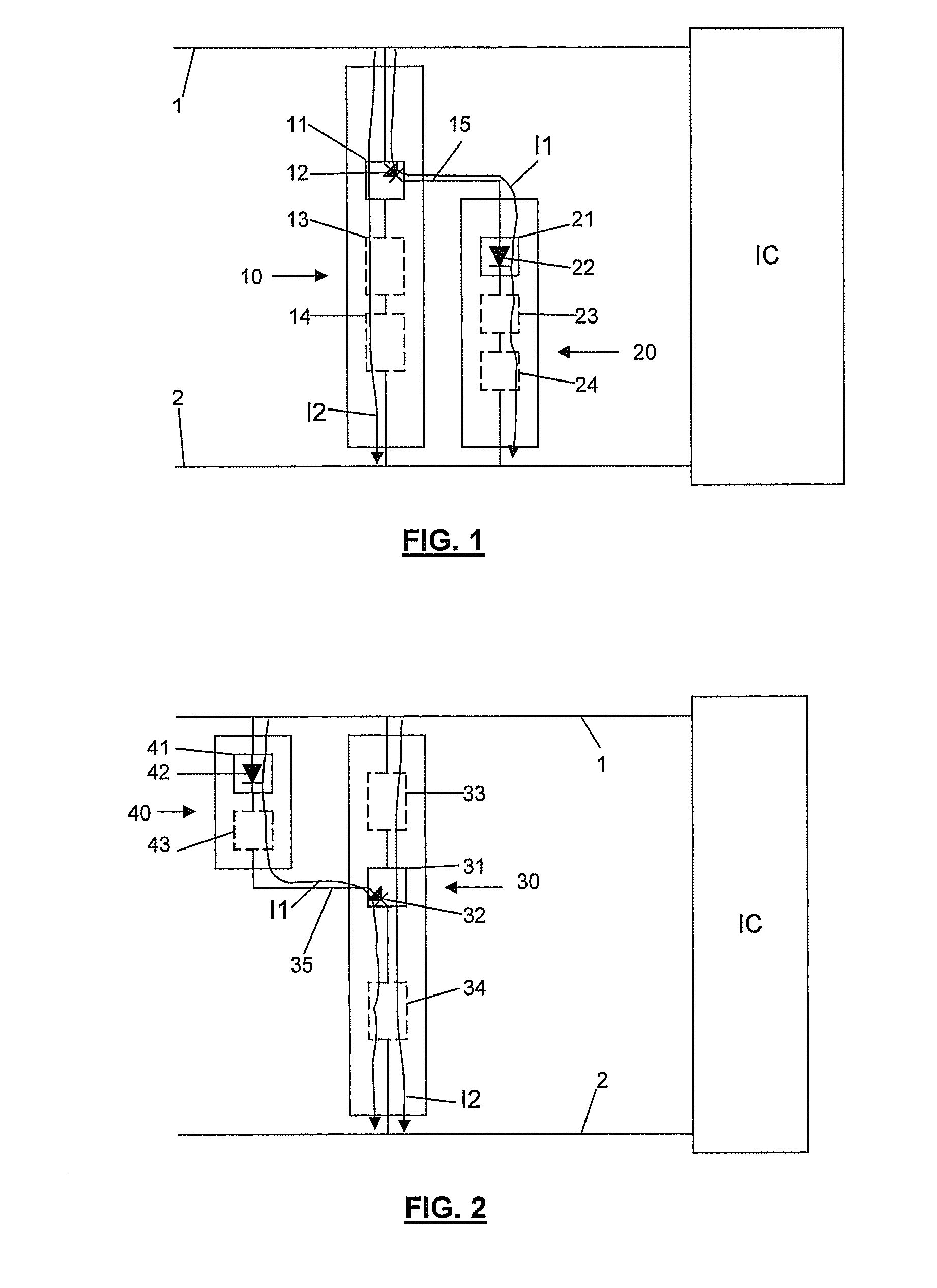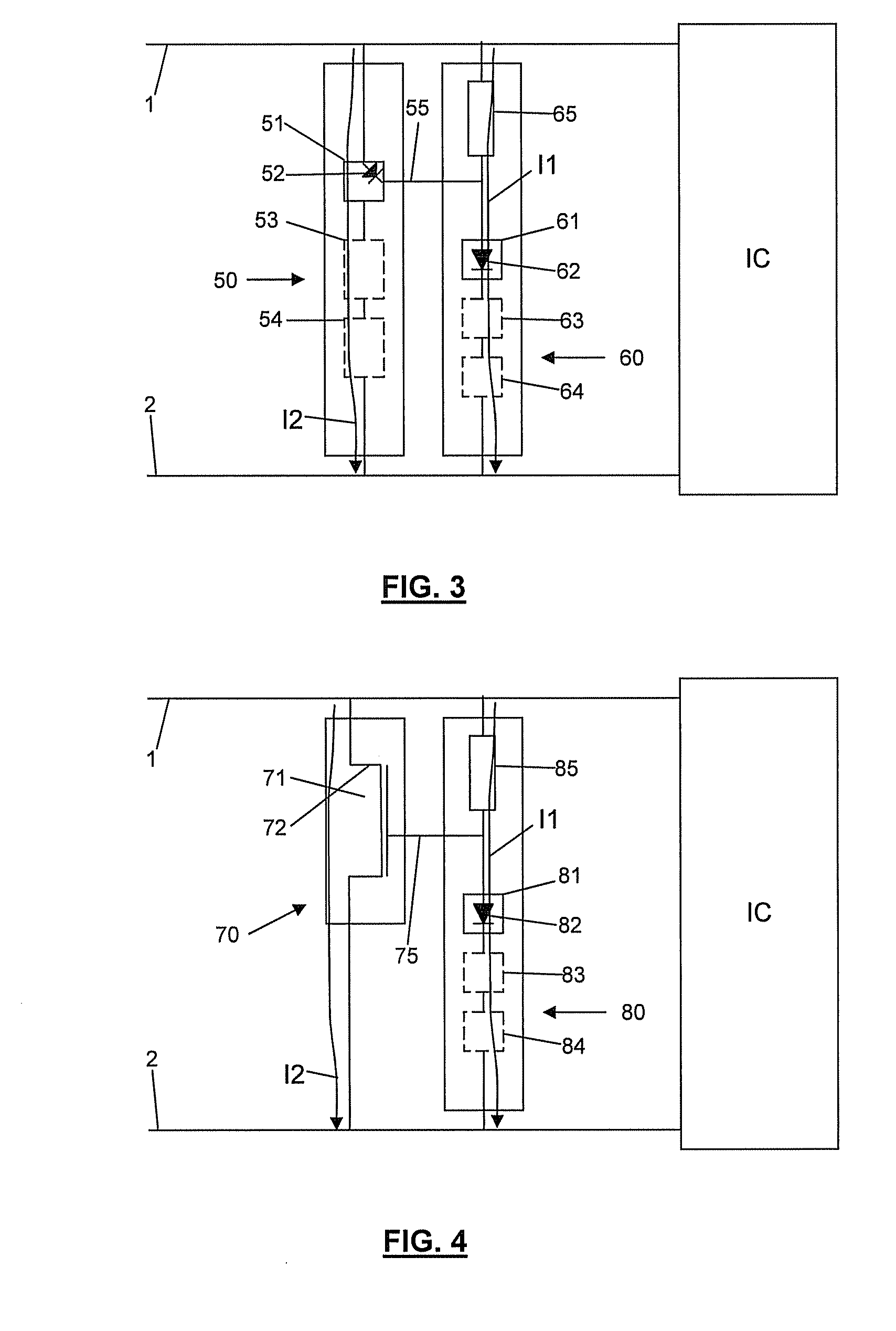Fast Triggering ESD Protection Device and Method for Designing Same
a protection device and fast triggering technology, applied in the direction of emergency protective arrangements for limiting excess voltage/current, instruments, electric digital data processing, etc., can solve the problem of overshoot still appearing over the ic, and achieve the effect of further reducing the overshoot over the i
- Summary
- Abstract
- Description
- Claims
- Application Information
AI Technical Summary
Benefits of technology
Problems solved by technology
Method used
Image
Examples
first embodiment
[0037]an ESD protection circuit is shown in FIG. 1. The circuit is designed for protecting an integrated circuit “IC” connected between a first node 1 and a second node 2 against an ESD event. The circuit comprises a main ESD device 10 and a triggering device 20. The main ESD device 10 is connected between the first and second nodes 1, 2 and is arranged for being triggered upon an ESD event and subsequently conducting ESD current from the first node 1 to the second node 2. This current is represented as the arrow I2. The main ESD device comprises a first component 11 with a first diode 12 and possibly other components 13, 14 in the current path I2. The first component 11 forms a triggering node 15 of the main ESD device 10 by means of which the device can be triggered for conducting the current I2. The triggering device 20 is connected between the triggering node 15 of the main ESD device 10 and the second node 2 and is added to reduce the triggering voltage of the main ESD device 1...
second embodiment
[0038]an ESD protection circuit according to the invention is shown in FIG. 2. The circuit comprises a main ESD device 30 and a triggering device 40. The main ESD device 30 is connected between the first and second nodes 1, 2 and is arranged for being triggered upon an ESD event and subsequently conducting ESD current from the first node 1 to the second node 2. This current is represented as the arrow I2. The main ESD device comprises a first component 31 with a first diode 32 and possibly other components 33, 34 in the current path I2. The first component 31 forms a triggering node 35 of the main ESD device 30 by means of which the device can be triggered for conducting the current I2. The triggering device 40 is connected between the triggering node 35 of the main ESD device 30 and the second node 2 and is added to reduce the triggering voltage of the main ESD device 30. This triggering device 40 comprises a triggering component 41 comprising a second diode 42 and possibly a numbe...
third embodiment
[0039]an ESD protection circuit according to the invention is shown in FIG. 3. The circuit comprises a main ESD device 50 and a triggering device 60. The main ESD device 50 is connected between the first and second nodes 1, 2 and is arranged for being triggered upon an ESD event and subsequently conducting ESD current from the first node 1 to the second node 2. This current is represented as the arrow I2. The main ESD device comprises a first component 51 with a first diode 52 and possibly other components 53, 54 in the current path I2. The first component 51 forms a triggering node 55 of the main ESD device 50 by means of which the device can be triggered for conducting the current I2. The triggering device 60 is connected between the triggering node 55 of the main ESD device 50, the first node 1 and the second node 2. It is added to reduce the triggering voltage of the main ESD device 50. Downstream from the triggering node 55, i.e. between this node and the second node 2, the tri...
PUM
 Login to View More
Login to View More Abstract
Description
Claims
Application Information
 Login to View More
Login to View More - R&D
- Intellectual Property
- Life Sciences
- Materials
- Tech Scout
- Unparalleled Data Quality
- Higher Quality Content
- 60% Fewer Hallucinations
Browse by: Latest US Patents, China's latest patents, Technical Efficacy Thesaurus, Application Domain, Technology Topic, Popular Technical Reports.
© 2025 PatSnap. All rights reserved.Legal|Privacy policy|Modern Slavery Act Transparency Statement|Sitemap|About US| Contact US: help@patsnap.com



